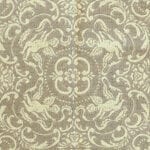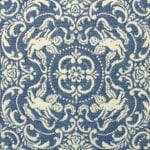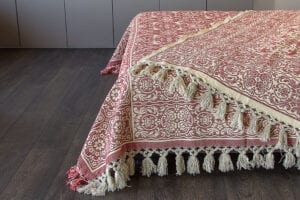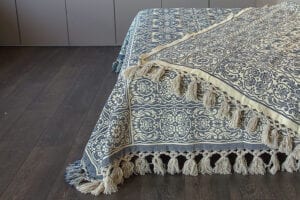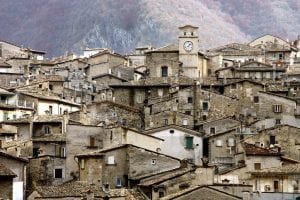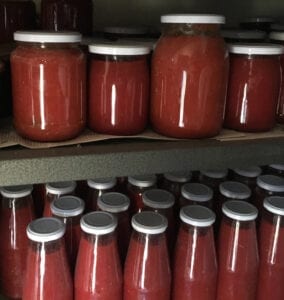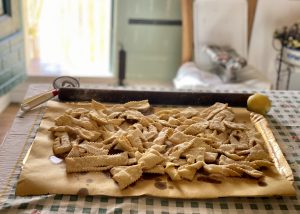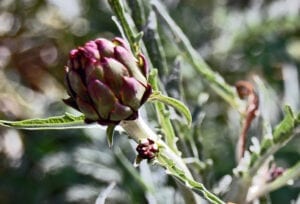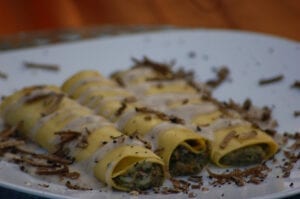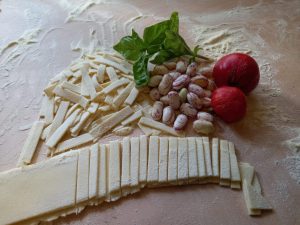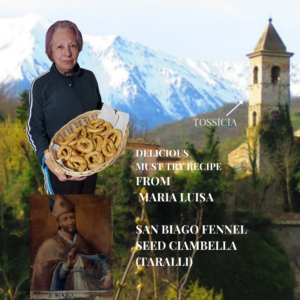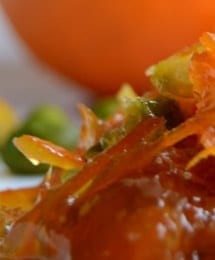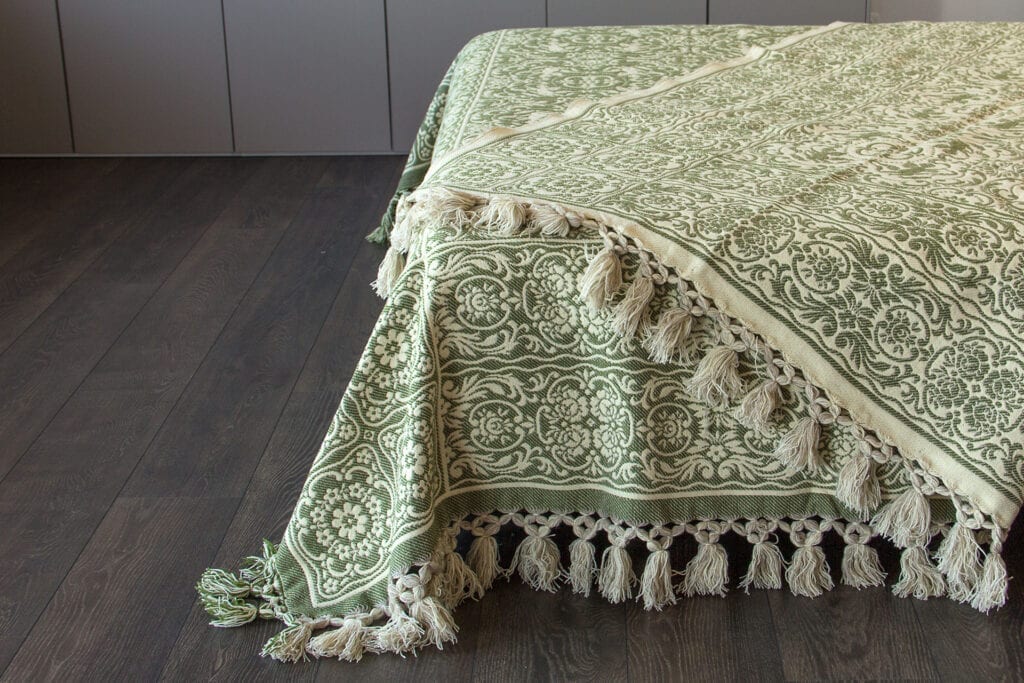
Many people have slept under a taranta whilst in Abruzzo and others under these brightly patterned blankets at their grandparents, who took them with them upon emigrating so many moons ago. Their stunning patterns and colours brought familiar warmth to so many when far away from home, generation after generation.
Today some high-end international luxury boutique hotels and department stores provide these woolly slices of Abruzzo history, sadly most that sleep under them unaware that they are in fact named after a little town in Chieti called Taranta Peligna, set deep in the Majella Mountains.
Taranta as it was formerly known, perfectly sat in the valley of the Aventino River, was once a Roman city. It came of age in the feudal middle ages with an income that relied upon its important geographical placement in the transumanza, where Abruzzo sheep were migrated down to Puglia to see off the hard winters. Adopting classical Arabic techniques for weaving and the spider as their town emblem, their foray into the wool & textile industry expanded away from mere sheep dips and shearing into the fabled blankets. They became chief suppliers of felt that so many armies used across Europe in their uniforms during territorial battles. Lanolin from many an Abruzzo sheep kept bonded soldiers and sailors dry if nothing else in some pretty grim times.
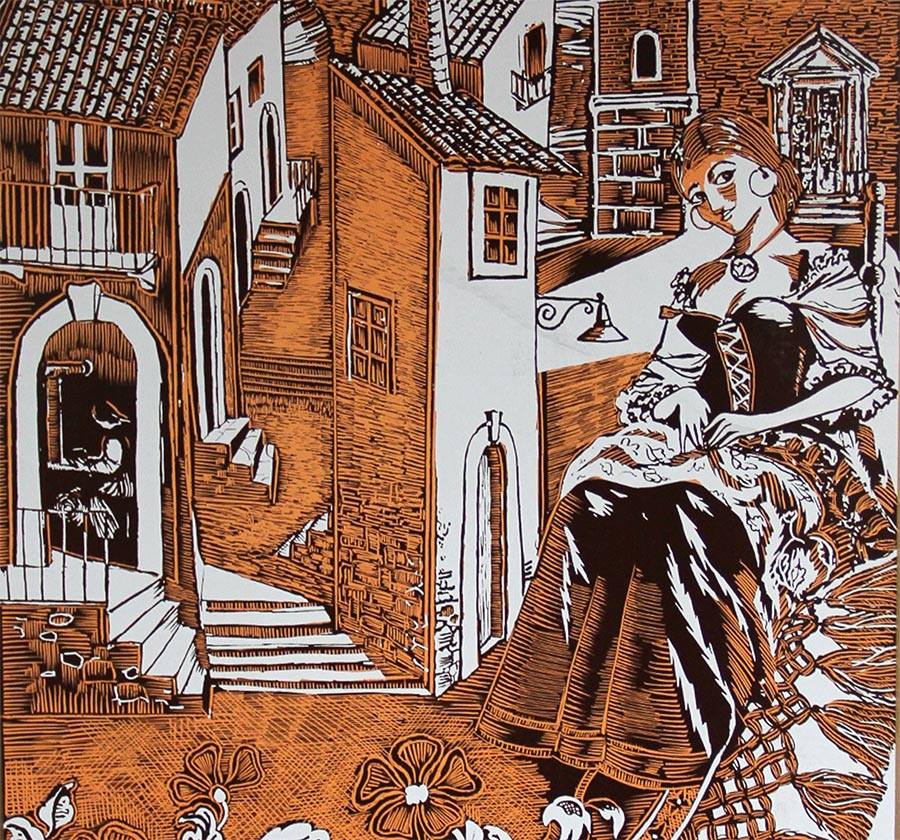
Taranta’s reputation for their extended palette depth grew as the quality of their organic dyes expanded: grape tannins for brown, blue from beetles and snails, greens from a mixture of local plants and herbs, yellow from locally grown saffron if used on a blanket for the wealthy. By the C15th the church of San Biagio, protector of wool-workers, had been built as an acknowledgement to its wealth source. Unfortunately, only its beautiful carved wooden portal remains standing today after earthquakes and the 2nd World War, which saw the destruction of the town after its economy had been literally wiped out with the advent of the English trade in indigo and the industrial revolution.
Today, Sig. Merlino is the only one Tarantolesi weaver that remains. The 4th generation of his family to undertake this dying art, unless there is a revival in awareness and in demand for these precious bedspreads, the story of woven warmth and a chunk of Abruzzese history will die, especially tragic when what he creates are so fantastic.
Do take a trip to the town and take a picnic alongside the river. If you visit on August 16, the day after Ferragosto, you can enjoy part of the town’s celebrations in its Feast of St Rocco that includes its brass band serenading ladies at their doors. In February pop into the bakers and see Panicelle, an unsalted bread that resembles 4 fingers or the combing card used for the wool.
If you are looking for a wedding present that shouts of Abruzzo or something that lasts forever, perhaps go down to Sig. Merlino’s storehouse and where he weaves or look at his online store.
Lanificio Vincenzo Merlino, (Sig. Merlino)
Sig. Gaetano Merlino | Tel: 338 4042144 | Address: Via Tintoira 1 | 66018 Taranta Peligna | Chieti. NB – if you do visit and it appears closed, do telephone the number on the door, he lives opposite & can easily come back & does speak English
Buy the taranta online at http://copertemerlinotaranta.it/, international shipping available.
The local Taranta Peligna commune is on the high street of the little town and is very helpful if you have questions.

